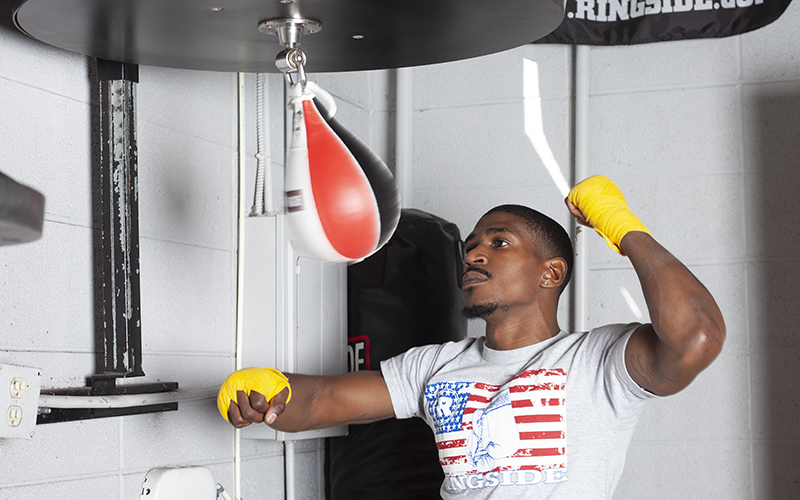
They say, “Speed Kills”. People get excited about punch power. But fighters who can throw more punches than their opponent usually win the day.
You don’t need some innate, natural-born talent to have fast hands. As with every other aspect of boxing, you develop fast hands through deliberate training. It takes time.
And like many other aspects of boxing training, you need to train your mind as well as your body.
We gathered together five of the most fundamental exercises for improving hand speed. Read on to learn more.
Think Fast and Stay Relaxed
Many people think that simply being able to punch fast results in fast hands in the ring. But in reality, what we call fast hands begins in the head.
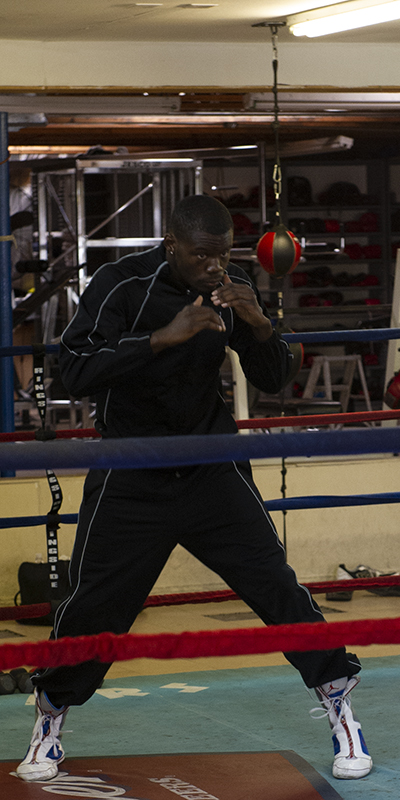
First, forget about throwing hard punches, at least to begin with. If your mind focuses on punching for power, you tend to punch slow.
You want to get the punch off quickly, make accurate contact, and return to a guard position as fast as possible. Don’t think about doing damage. Think about trying to touch your opponent without being seen.
Second, learn to stay loose and relaxed. Please note that “relaxed” does not mean lazy or complacent. “Relaxed” means free of tension.
Don’t allow your shoulders to hunch, your biceps to tighten, or your fist to clench. Rather, keep your muscles and joints loose and free, ready to spring into action.
Third, make muscle memory your friend. You don’t want to be thinking about what punch to throw or what punch comes next in this combination. Train combinations as complete sequences, rather than a series of separate punches. The less time you spend thinking, the faster your punch will appear to be.
1. Follow the Ball (Speed Bag, Double End Bag, and Reflex Bag)
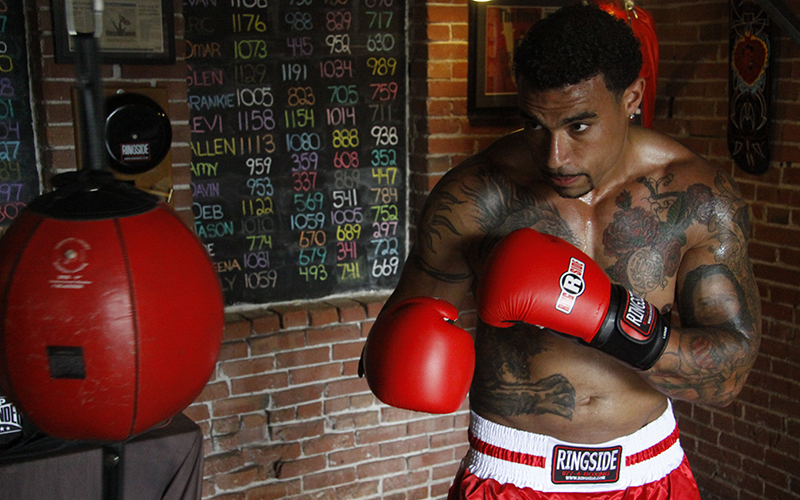
Now that you’ve got your mind right, it’s time to start learning to see the fast moving targets. Because it’s easy to hit a big, slow moving heavy bag. But blocking and countering an incoming punch before your opponent slips away again takes some training.
The speed bag, the double end bag, and the reflex bag will become your best friends for this portion of your training. These devices move fast and, sometimes, in unexpected ways. You should aim to strike these targets accurately to begin with. Then you can build up your speed.
While each of these bag types reacts differently to your contact, you should approach your training on each in a similar fashion.
Begin by throwing a single jab. Then WATCH the bag. Learn its movements. Then throw another jab when you know you can hit it. Repeat. As you gain skill and confidence work in additional punches and combinations and challenge yourself to move faster.
2. Throwing Punches in the Air (Shadow Boxing)
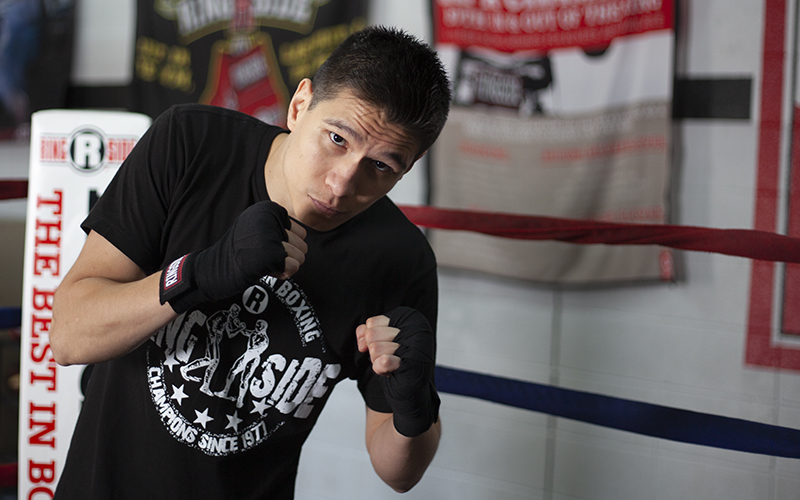
Shadowboxing is the ultimate tool for learning to throw fast punches. You don’t have a bag to bounce off of, a target to punch through, or any gloves to slow you down. Just throw your hands as fast as you can. And try to pull them back even faster.
As we’ve said before, Shadowboxing is where you build the muscle memory for your in-ring moves. This holds true for learning speed as well as technique. Work on your single punches. Then work on your combinations. Incorporate your footwork. Exhale on every punch and every movement.
Work your way through a three-minute round. Then rest for a minute. Aim to do three full rounds. Focus on executing your movements at full-speed, but with only partial extension.
3. Never Stop Punching (Working the Heavy Bag)
Now that your body has learned to move quickly and respond in an instant, you need to develop endurance. It won’t matter how fast your hands are in the first round if you can’t keep them moving by the third.
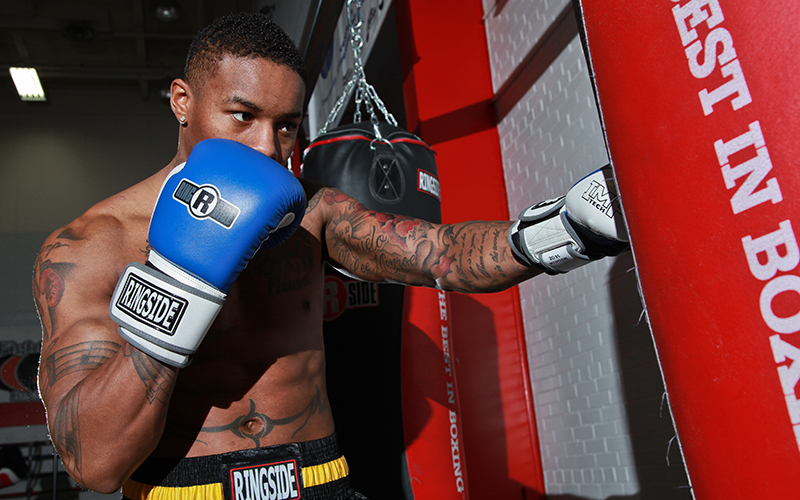
Interval training on the heavy bag provides one of the most useful tools for developing endurance. It will simulate the start and stop of a round of boxing. Interval style training also generates stronger gains more quickly.
Set your interval clock or timer for three three-minute rounds with a one-minute rest in between. Stand with a partner on opposite sides of a bag. One holds the bag, and the other punches for 15-20 seconds nonstop at full speed. Then switch.
Do this back and forth until the round ends. Don’t worry about getting the 15-20 seconds exact. When you think you’ve hit the time, stop and take the bag from your partner. Over time, the muscles in your back and arm will gain the endurance to punch fast over the course of a full fight.
4. Building Explosive Strength (Resistance Training)
While we have primarily focused on learning to punch fast, we cannot ignore basic strength training. As we showed in our article on the science behind the training, learning to punch fast depends on dynamic, explosive exercises.

Variations on the basic push-up form one of the most useful strength training exercises for building fast hands. In the clapping push-up, you push up as hard and as fast as you can when you get to the bottom of your movement. The goal is to create separation between your hands and the ground. If you rise high enough to clap between reps, even better.
The medicine ball push-up, adds a dynamic side-to-side element. You place one hand on the ground and one hand on a medicine ball. As you reach the top of your movement, you bring the hand that was on the ground to the ball, and shift the hand that was on the ball to the ground. Then lower yourself to the ground and repeat.
Fast hands aren’t just about throwing punches. They are about recovery as well. Once you throw a punch, that hand must return before you can punch again. To train these muscles for speed, we have to include a plyometric style pulling exercises.
The plyometric body row focuses on movement that is similar to that used for punching. In this exercise, you hang horizontally from a bar with your arms in front of you, and your feet on the ground. You pull explosively, allowing your hands to come free as your chest reaches the bar. Catch the bar again as you start to come down, controlling your descent to your starting position. This exercise can also be done using a bent over dumbbell row or a rowing machine.
5. React to the Unexpected (Partner Drills)
Learning to react to the unexpected forms the final, important part of training fast hands. And nothing beats another, crafty human for creating the unexpected.
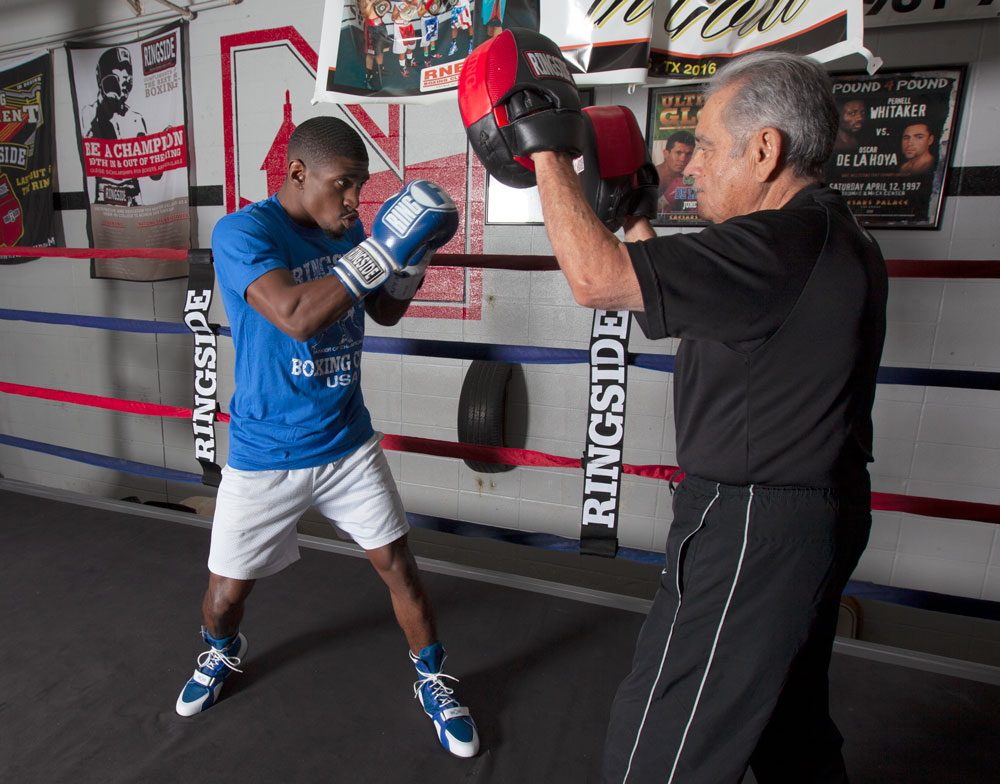
Target training is the most common form of partner drill we see in boxing. Coaches typically use the punch mitt as their favorite target. But your partner can also use strike sticks/target paddles to enhance the focus on speed and accuracy over power.
For speed training, we advise that the partner present the fighter with a variety of random targets. Once the fighter has made contact with a target pull it down and present the other one as quickly as possible in a new location. Force the fighter to respond to lots of different looks in quick succession. This will help to improve reaction time.
Another form of reflex training appears similar to a game of Red Light, Green Light. The fighter walks around the gym at a comfortable pace, focusing on breathing. The partner then calls out a command at random intervals. The fighter stops and throws a series of punches (a random set, a predetermined set, or a set specified by the partner’s command) as fast as possible. When the movement completes, the fighter returns to the prior relaxed, focused walk.
As we’ve shown, having fast hands is about more than just punching quickly. More than anything, becoming a speedy puncher relies on a fighter’s brain and vision at least as much as their physical ability. But if you work hard, and train right, you can develop fearsome hand speed.


Write On
I’m a 65 year “OLD” man and who says that U can’t teach an old dog new tricks?
ThanX 4 the articles an tips❤️❤️Ft (Funky Town Worth TEXAS
not bad, who wrote this and what is your boxing experience ??
Excellent article, just like all the others. I always believe “Speed is Power”, stay loose and let it fly.
Thank you very much for the ideas you shared. We need to share in order to elevate the Sweet Science.
Demonstrate the plyometric body row
Clarence, we added a video at the bottom of that section that demonstrates the plyometric body row. It’s not one of ours, but it shows what we were going for.
Thank you for the hand speed tips. I think providing these tips is also a good thing to help me realize what equipment I can use to get the best results when I work out at home.
Not to sound our own horn, but we can help you get all of the equipment you need. Both the boxing stuff and the workout equipment. You can email Stephanie at sthurman[at]combatbrands.com and she can set you up. She can also walk you through what you might need depending on your goals.
Thank you for another great, clear, and informative article.
You do make a contribution and a difference to our boxing world with very useful tips.
Thank you again.
Sincerely,
Nicolas:)
I love the boxing stuff.